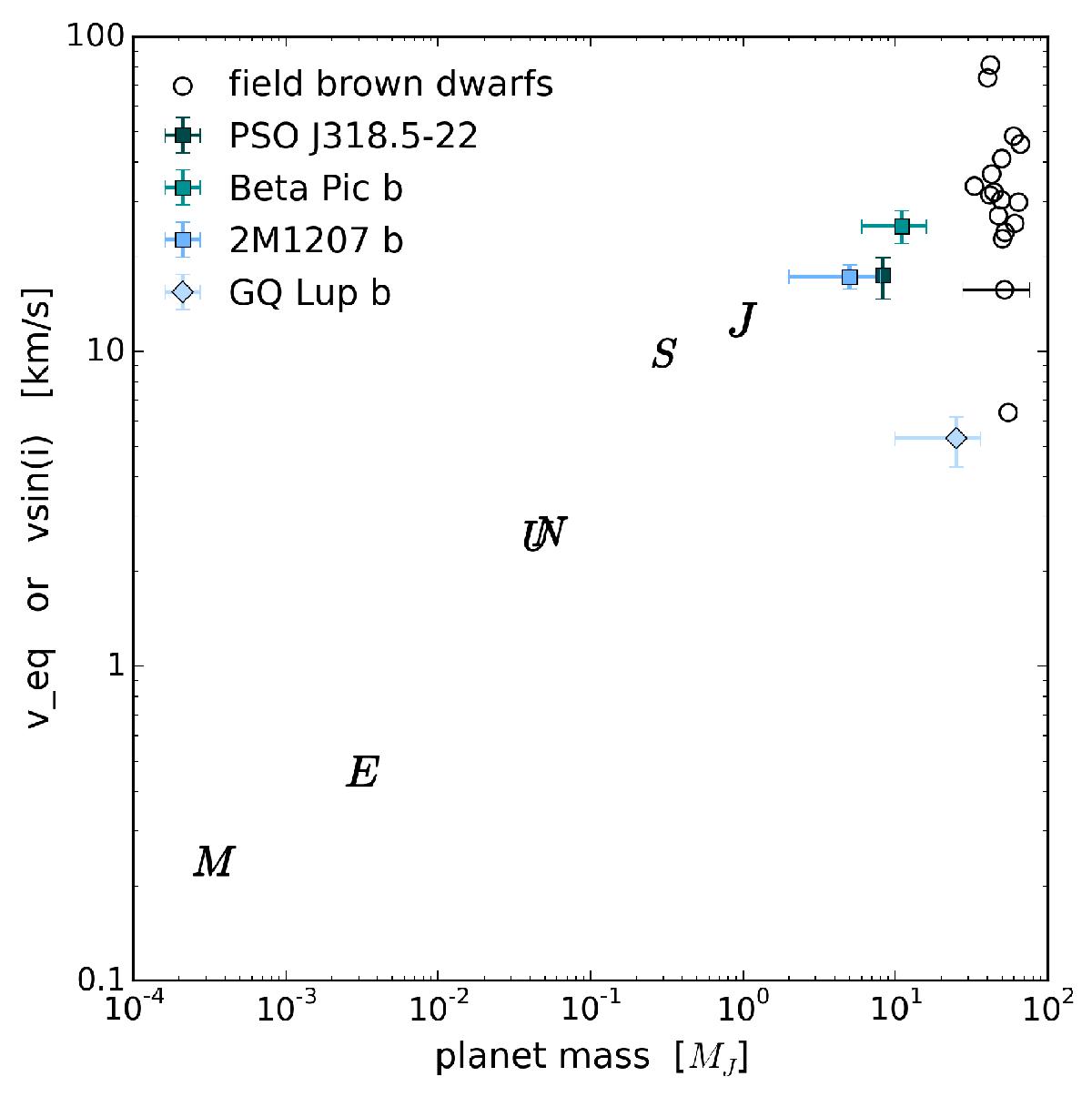Fig. 8

Spin as function of mass for extrasolar substellar companions and solar system planets, together with the free-floating planetary mass object PSO J318.5-22 and field brown dwarfs. The solar system planets and 2M1207 b have equatorial rotation velocities and β Pictoris b and GQ Lupi b have projected rotation velocities, as does PSO J318.5-22. Mercury and Venus are not included in the plot because their proximity to the Sun has caused their spin to be dominated by tidal interactions with the Sun. For comparison, field brown dwarfs with estimated masses and either a rotational period measurement or vsin (i) measurement are shown as empty circles, with the typical uncertainty in mass indicated for a single object. Their masses and radii are from Filippazzo et al. (2015), rotational periods are from Metchev et al. (2015), and vsin (i)’s are from either Zapatero Osorio et al. (2006) or Blake et al. (2010). The field brown dwarfs are much older than the substellar companions and PSO J318.5-22 with highly uncertain ages in the range 500 Myr to 10 Gyr.
Current usage metrics show cumulative count of Article Views (full-text article views including HTML views, PDF and ePub downloads, according to the available data) and Abstracts Views on Vision4Press platform.
Data correspond to usage on the plateform after 2015. The current usage metrics is available 48-96 hours after online publication and is updated daily on week days.
Initial download of the metrics may take a while.


